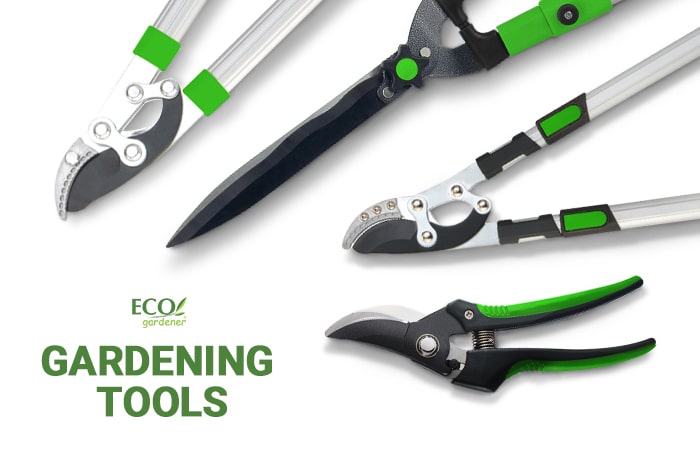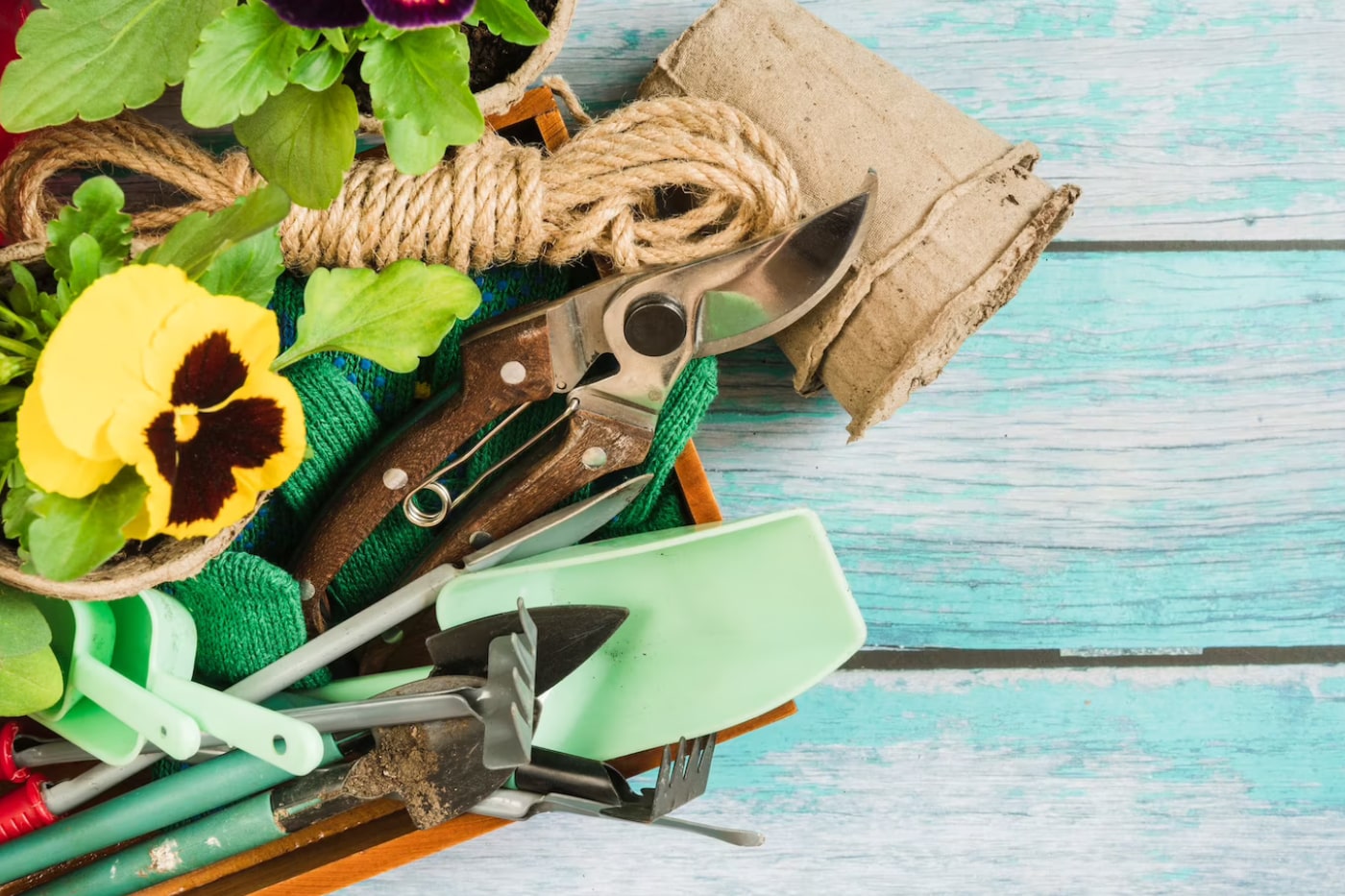Gardening is a great workout but can be backbreaking if you manage a big garden. Thankfully, some tools make the job easier for growers - especially those with mobility issues. Most gardeners rely on various tools for specific tasks. If you're building your gardening arsenal and want to know which tools are most used in and around the garden, this guide is for you! Here are several tasks that require the use of gardening tools:
Contents []
Gardening Tasks and Activities that Require Tools
Digging and Tilling the Soil: Two essential gardening tasks involve working the soil to achieve the perfect texture for growing different plants. These tasks will require precise tools, such as:
- Shovel
- Spade
A shovel is similar to a spade, but in terms of use, one cannot replace the other. The shovel has a long handle with a scooped, pointed blade. It is designed for digging holes. The pointed edge can break compacted soil and cut through weeds and vegetation. The scooped blade is used to move dirt or materials around.
On the other hand, a spade has a shorter handle and a wide, flat blade. It is designed to move materials around, not dig holes.

Planting: Planting different crops will require big tools like a shovel and spade. It will also need small tools, like a trowel. A trowel is a handheld tool with a curved, scooped blade with a pointed end. It's used to dig small holes for planting, break compacted soil, remove weeds, or turn over a garden bed. It's also used for soil amendment by filling and mixing fertilizers or compost with the soil.
Watering: Watering is a critical part of maintaining a healthy garden. In the summer, when the temperature rises, plants need frequent watering to survive the season. In colder regions, regular watering is still required to hydrate plants. You can install a watering system to automate the water supply. However, automated watering systems will require an upfront investment. For small to medium gardens, you can use a watering can to water the plants. A garden hose or sprinkler hydrates more plants in medium- to large-sized gardens.

Pruning: Pruning is a vital gardening task. Plants spend a lot of energy growing their foliage; if left unpruned, the branches and leaves grow too thickly. Eventually, unpruned plants will take over the space and choke other plants nearby. Regular pruning to thin plant foliage helps stimulate new growth, boost air circulation, and promote healthy foliage.
Pruning shears are the best at keeping overgrowth in check. You can use a hand pruner for small plants and a pruning shear or saw for thicker branches. A pruner with telescopic handles is best for pruning trees and big shrubs.

Weeding: Regular weeding prevents fast-growing, unwanted plants from taking over the garden. Weeds steal soil nutrients from your precious crops. This garden task is not a one-time thing, it's done regularly to keep weeds in check. You use different types of digging tools to uproot weeds. A hoe, trowel, or shovel could eliminate weeds, although most of these tools are heavy.
You can opt for a stand-up weed puller, a tool designed specifically for weeding. ECOgardener stand-up weeder helps remove weeds without kneeling or bending down. But if you hate weeding, use landscape fabric for better weed control.
Raking: Fallen leaves can spread pests and diseases, so keeping the lawn clear helps keep the garden healthy. Thick layers of fallen leaves will also suffocate plants and grass. Collecting fallen leaves with a rake helps keep the property healthy. Also, the rake can level the soil and remove debris that can affect the look and health of the garden.

Mulching: A layer of mulch improves the garden's look while keeping weeds at bay. Mulching helps retain soil moisture, suppress weed growth, and improve the garden's look, regardless of the material you use.
You can use organic and non-organic mulch. For most gardeners, landscape fabric becomes popular because it is easy to install, eco-friendly, and widely available.
Amending the soil: Plants absorb nutrients from the soil, and as a result, the soil is depleted of nutrients after the growing season. You must bring the nutrients back into the soil by applying soil amendments or natural fertilizers at the end of the growing season. You can choose between chemical and natural fertilizers, though we recommend going the natural route to prevent harmful compounds from polluting the soil and waterways.
Harvesting: The harvest season is always exciting, although tedious, if you don't have the right tools on hand. Hand pruners, garden scissors, and garden knives will be handy as you collect fruits and vegetables from tree to tree. You'll also need a wheelbarrow to carry heavy loads like harvesting ripe melons, squash, etc. Remember to wear your trusty garden gloves to protect your hands as you reap the fruits of your labor!
Lawn care: For homeowners and gardeners with a lawn, maintenance is essential to keeping the grass healthy and neat. Invest in a high-quality lawnmower to cut the grass, a leaf blower to keep unwanted debris off your precious lawn, and an edger to define the edges along garden beds and walkways.
Why Should You Invest in Gardening Tools
Gardening is a rewarding activity, but it's backbreaking work. Having the right tools makes gardening tasks easier while preventing injuries. Still on the fence about spending your hard-earned money on quality gardening tools? Here are reasons why you should complete your gardening arsenal today:
Efficiency: Gardening is infinitely more manageable if you have all the tools you need to complete every task. Digging, for example, is much easier if you have a hoe or shovel instead of tilling the soil by hand. The same goes for removing weeds or pruning overgrowths - these tasks are easier to complete if you have the right tools.
Safety: Having the correct tools minimizes the risk of injuries and accidents. Using garden gloves, protective eyewear, or headgear protects from cuts, scrapes, and other injuries. Garden tools with ergonomic designs minimize strain, so you're more comfortable as you work in the garden.
Precision: With garden tools, doing simple gardening tasks like weeding or pruning is much easier. Pulling weeds by hand is backbreaking work. A stand-up weeder lets you clear the garden of weeds without straining your hands and back. Pruning by hand is dangerous for you and for the plants. Using pruning shears lets you make clean, quick cuts without harming the plants.

Gardening will require essential gardening tools. Knowing the right tools needed to get the job done while minimizing the risk of injury. It's equally important to invest in high-quality gardening tools. Complete your gardening essentials here and have the peace of mind of knowing that you're spending money on gardening tools that will stand the test of time.



